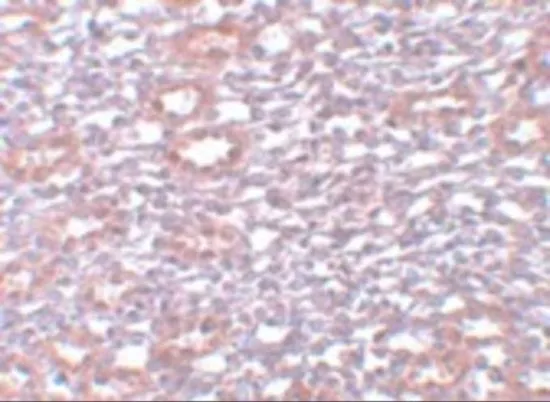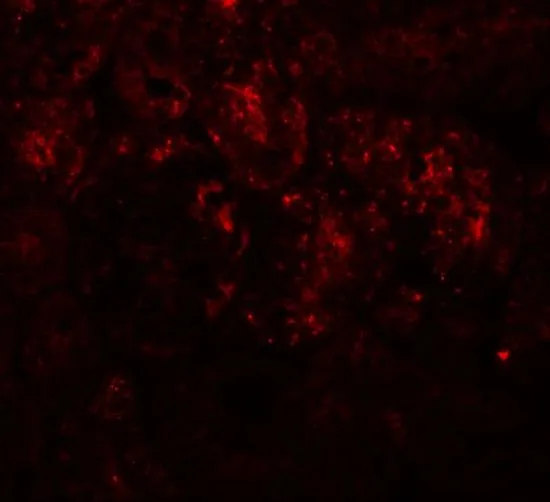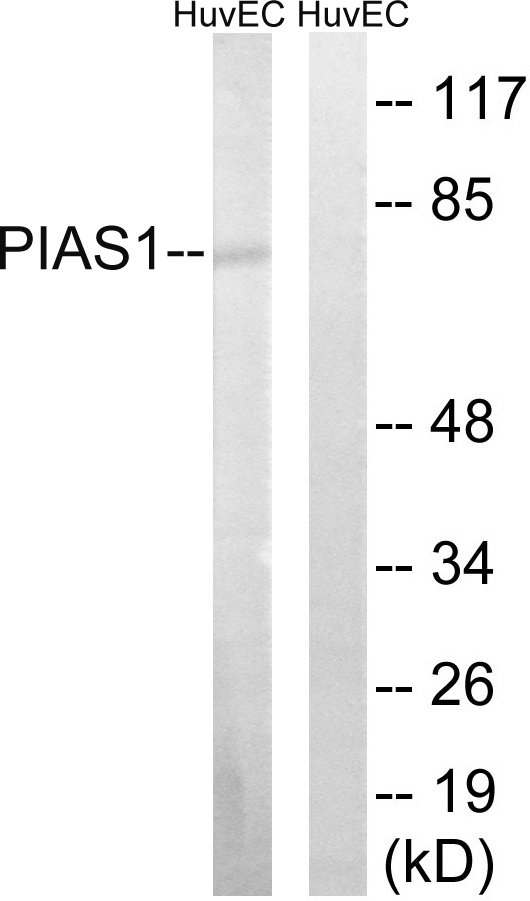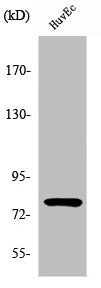
IHC-P analysis of rat kidney tissue using GTX31410 PIAS1 antibody. Working concentration : 5 microg/ml
PIAS1 antibody
GTX31410
ApplicationsWestern Blot, ELISA, ImmunoHistoChemistry, ImmunoHistoChemistry Paraffin
Product group Antibodies
TargetPIAS1
Overview
- SupplierGeneTex
- Product NamePIAS1 antibody
- Delivery Days Customer9
- Application Supplier NoteWB: 1 microg/mL. IHC-P: 5 microg/mL. *Optimal dilutions/concentrations should be determined by the researcher.Not tested in other applications.
- ApplicationsWestern Blot, ELISA, ImmunoHistoChemistry, ImmunoHistoChemistry Paraffin
- CertificationResearch Use Only
- ClonalityPolyclonal
- Concentration1 mg/ml
- ConjugateUnconjugated
- Gene ID8554
- Target namePIAS1
- Target descriptionprotein inhibitor of activated STAT 1
- Target synonymsDDXBP1, GBP, GU/RH-II, ZMIZ3, E3 SUMO-protein ligase PIAS1, AR interacting protein, DEAD/H (Asp-Glu-Ala-Asp/His) box binding protein 1, DEAD/H box-binding protein 1, E3 SUMO-protein transferase PIAS1, RNA helicase II-binding protein, gu-binding protein, protein inhibitor of activated STAT protein 1, zinc finger, MIZ-type containing 3
- HostRabbit
- IsotypeIgG
- Protein IDO75925
- Protein NameE3 SUMO-protein ligase PIAS1
- Scientific DescriptionThis gene encodes a member of the mammalian PIAS [protein inhibitor of activated STAT-1 (signal transducer and activator of transcription-1)] family. This member contains a putative zinc-binding motif and a highly acidic region. It inhibits STAT1-mediated gene activation and the DNA binding activity, binds to Gu protein/RNA helicase II/DEAD box polypeptide 21, and interacts with androgen receptor (AR). It functions in testis as a nuclear receptor transcriptional coregulator and may have a role in AR initiation and maintenance of spermatogenesis. [provided by RefSeq, Jul 2008]
- Storage Instruction-20°C or -80°C,2°C to 8°C
- UNSPSC12352203





![WB analysis of various samples using GTX03235 PIAS1 antibody [GT1323]. Dilution : 1:1000 Loading : 25microg per lane](https://www.genetex.com/upload/website/prouct_img/normal/GTX03235/GTX03235_37_WB_w_23053123_725.webp)


